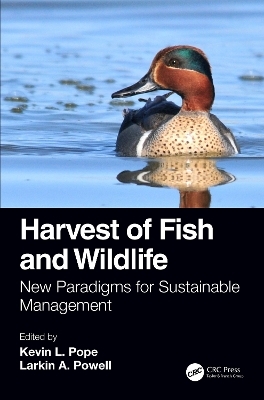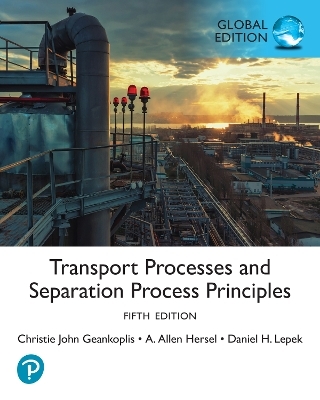
Harvest of Fish and Wildlife
CRC Press (Verlag)
978-1-032-00200-2 (ISBN)
Features:
Written by twenty-four teams of leading scientists and managers.
Promotes transparent justification for fishing and hunting regulations.
Provides examples for integrating decision making into management.
Emphasizes creativity in management by integrating art and science.
This book appeals to population biologists, evolutionary biologists and social scientists. It is a key resource for on-the-ground managers and research scientists developing harvesting applications.
As the book’s contributors explain:
“Making decisions that are robust to uncertainty…is a paradigm shift with a lot of potential to improve outcomes for fish and wildlife populations.” –Andrew Tyre and Brigitte Tenhumberg
“Temporal shifts in system states…must somehow be anticipated and dealt with to derive harvest policies that remain optimal in the long term.” –Michael Conroy
“Proactive, effective management of sportspersons…will be essential in the new paradigm of harvest management.” –Matthew Gruntorad and Christopher Chizinski
Kevin Pope earned his PhD in biological sciences at South Dakota State University and is leader of the U.S. Geological Survey—Nebraska Cooperative Fish and Wildlife Research Unit housed at the University of Nebraska-Lincoln, where he also serves as professor for the School of Natural Resources. Dr. Pope's research program concentrates on understanding complex social-ecological systems, especially inland recreational fisheries. He has written more than 115 journal articles. Dr. Pope received the Award of Excellence from the Fisheries Management Section of the American Fisheries Society for inspirational leadership in the fishery profession. Larkin Powell earned his PhD in ecology at the University of Georgia and is a professor in the School of Natural Resources at the University of Nebraska-Lincoln, where he also serves as Associate Dean for the College of Agricultural Sciences and Natural Resources. Dr. Powell's research program focuses on landscape dynamics, animal demography and movements, and decisions made by private landowners. He has written more than 120 journal articles and authored, coauthored, or contributed to seven books. Dr. Powell received the Excellence in Wildlife Education Award from The Wildlife Society.
Section 1: Setting Regulations
Section 1A: Harvest Management Paradigms
1. Some Perspectives on the Development of a Paradigm for Modern Harvest Management
2. The Social and Political Context of Harvest Management
3. Linking Social and Ecological Components to Spatial and Temporal Components of Harvest
4. Hunter and Angler Behavior in Harvest Management
5. Expanding Participation in Recreational Fishing Through Multiple License Markets
6. Marketing and Ecological Models to Predict Permit-Purchasing Behavior of Sportspersons
Section 1B: Harvest Management Decision Processes
7. A Decision-Analytical Framework for Developing Harvest Regulations
8. Engaging Hunters in Selecting Duck Season Dates Using Decision Science: Problem Framing, Objective Setting, Devising Management Alternatives
9. Using Structured Decision Making to Incorporate Ecological and Social Values into Harvest Decisions: Case Studies of White-Tailed Deer and Walleye
10. Structured Decision Making Provides Insight When Selecting Population-Monitoring Programs
11. Making Harvest Management Decisions Robust to Uncertainty
Section 2: Harvest Outcomes
Section 2A: Evolutionary and Population Dynamics for Harvested Species
12. How Regulations Can Affect the Evolutionary Impacts of Recreational Harvests on Fish and Mammals
13. Harvest Regulations in Evolving Fisheries
14. Individual Heterogeneity in Annual Survival: Quantifying the “Doomed Surplus”
Section 2B: Efficacies of Harvest Regulations
15. Direct and Indirect Effects of Harvest Regulations on Wildlife Populations
16. What to Exploit When You’re Exploiting: Angling Rates and Size Selection Responses to Changing Bag Limits
17. Shifting Angler Harvest Behaviors: A Case Study Using Largemouth Bass
18. Harvest as A Tool to Manage Populations of Undesirable Or Overabundant Fish and Wildlife
19. The Efficacy of Antler Harvest Regulations in Meeting Management Objectives
Section 3: Management Alternatives
Section 3A: Harvest Regulation Paradigms for Wildlife and Fisheries
20. Harvest Management of Migratory Game Birds
21. Upland Game Bird Harvest Management
22. The Future of Managing Ungulate Species: White-Tailed Deer as A Case Study
23. Harvest Management of Furbearers
24. Harvest Regulations for Inland Recreational Fisheries
| Erscheinungsdatum | 08.06.2021 |
|---|---|
| Zusatzinfo | 27 Tables, black and white; 73 Line drawings, black and white; 15 Halftones, black and white; 88 Illustrations, black and white |
| Verlagsort | London |
| Sprache | englisch |
| Maße | 178 x 254 mm |
| Gewicht | 453 g |
| Themenwelt | Technik ► Umwelttechnik / Biotechnologie |
| Weitere Fachgebiete ► Land- / Forstwirtschaft / Fischerei | |
| ISBN-10 | 1-032-00200-X / 103200200X |
| ISBN-13 | 978-1-032-00200-2 / 9781032002002 |
| Zustand | Neuware |
| Informationen gemäß Produktsicherheitsverordnung (GPSR) | |
| Haben Sie eine Frage zum Produkt? |
aus dem Bereich


